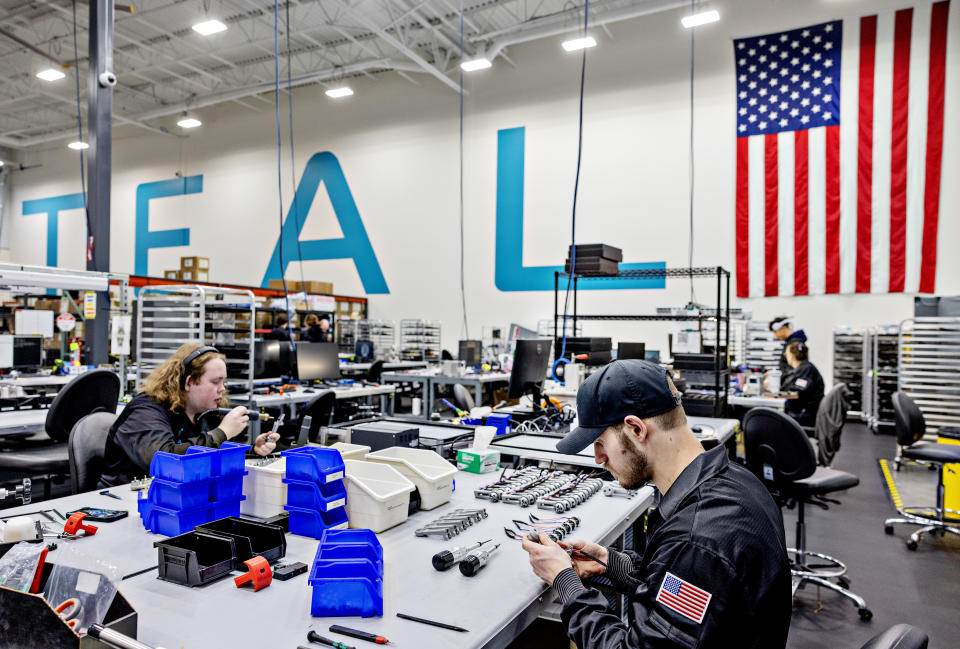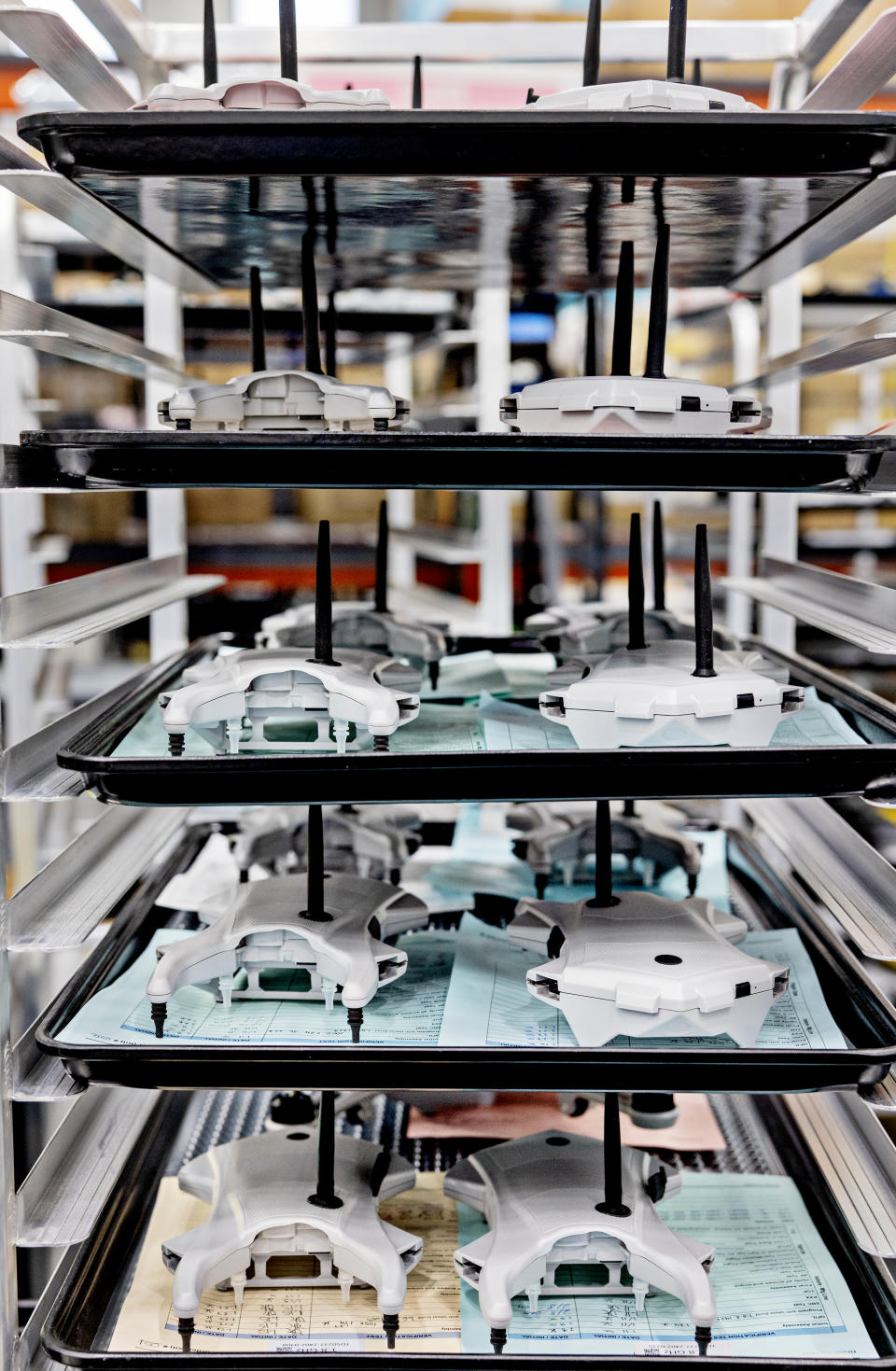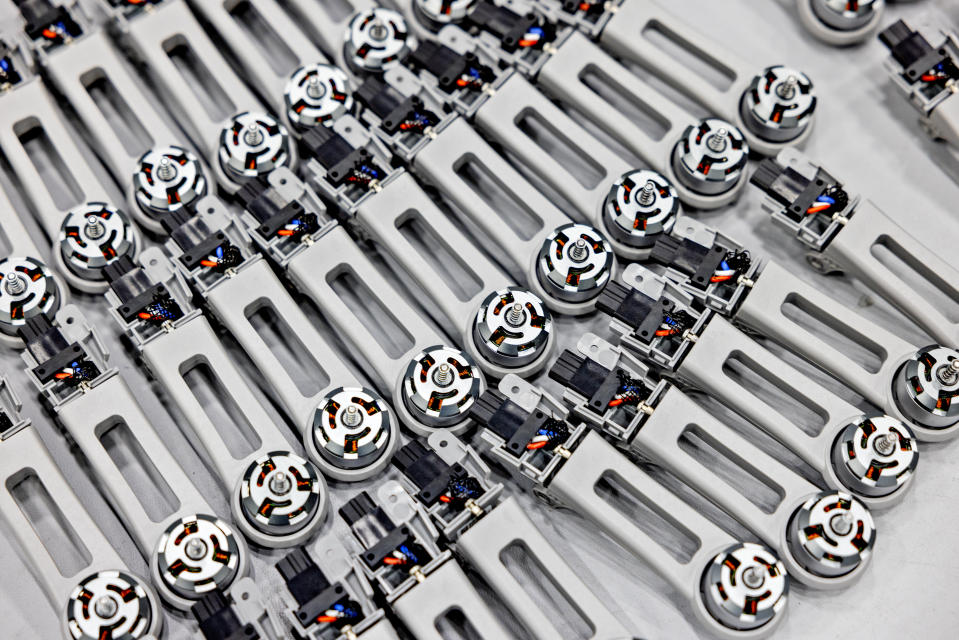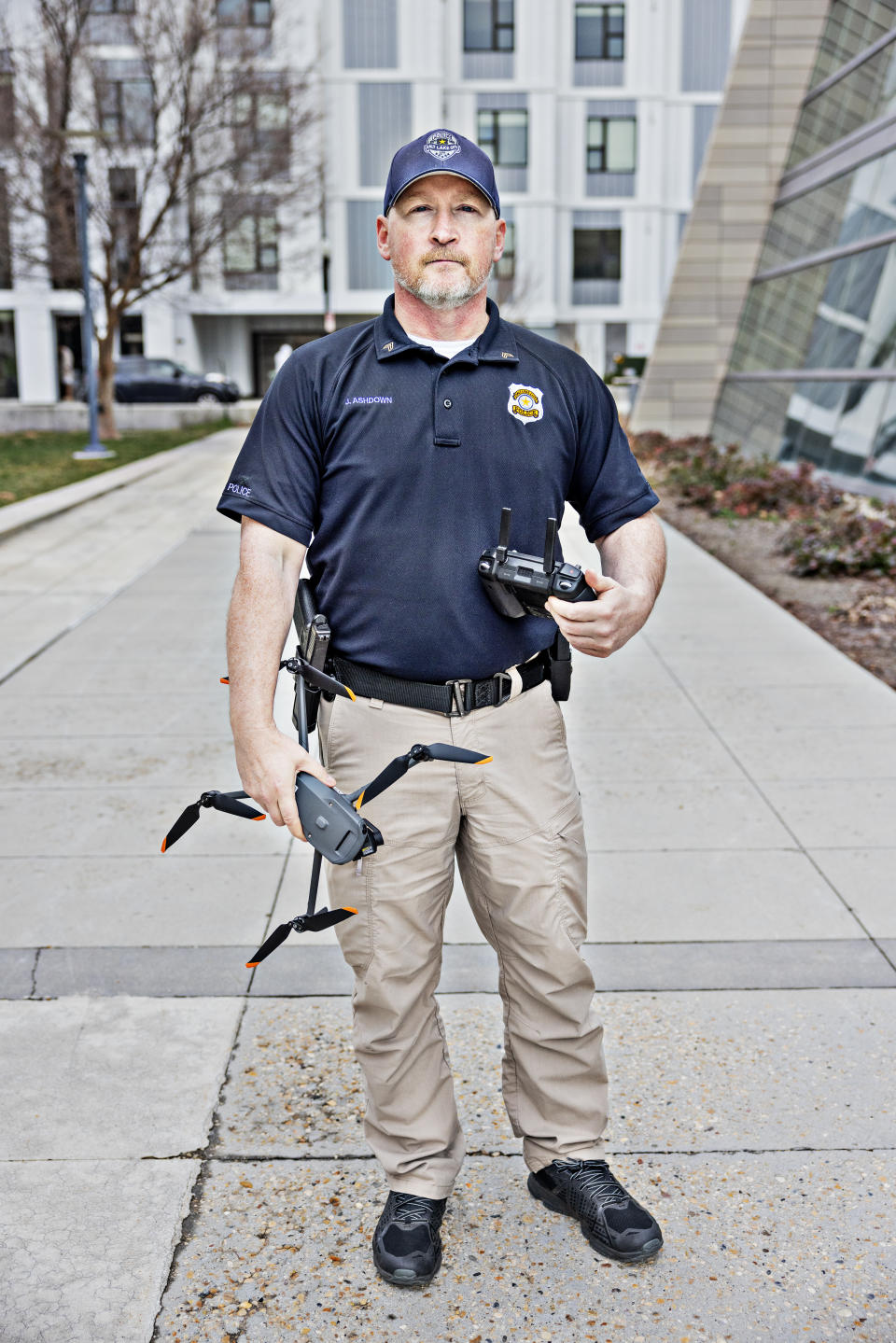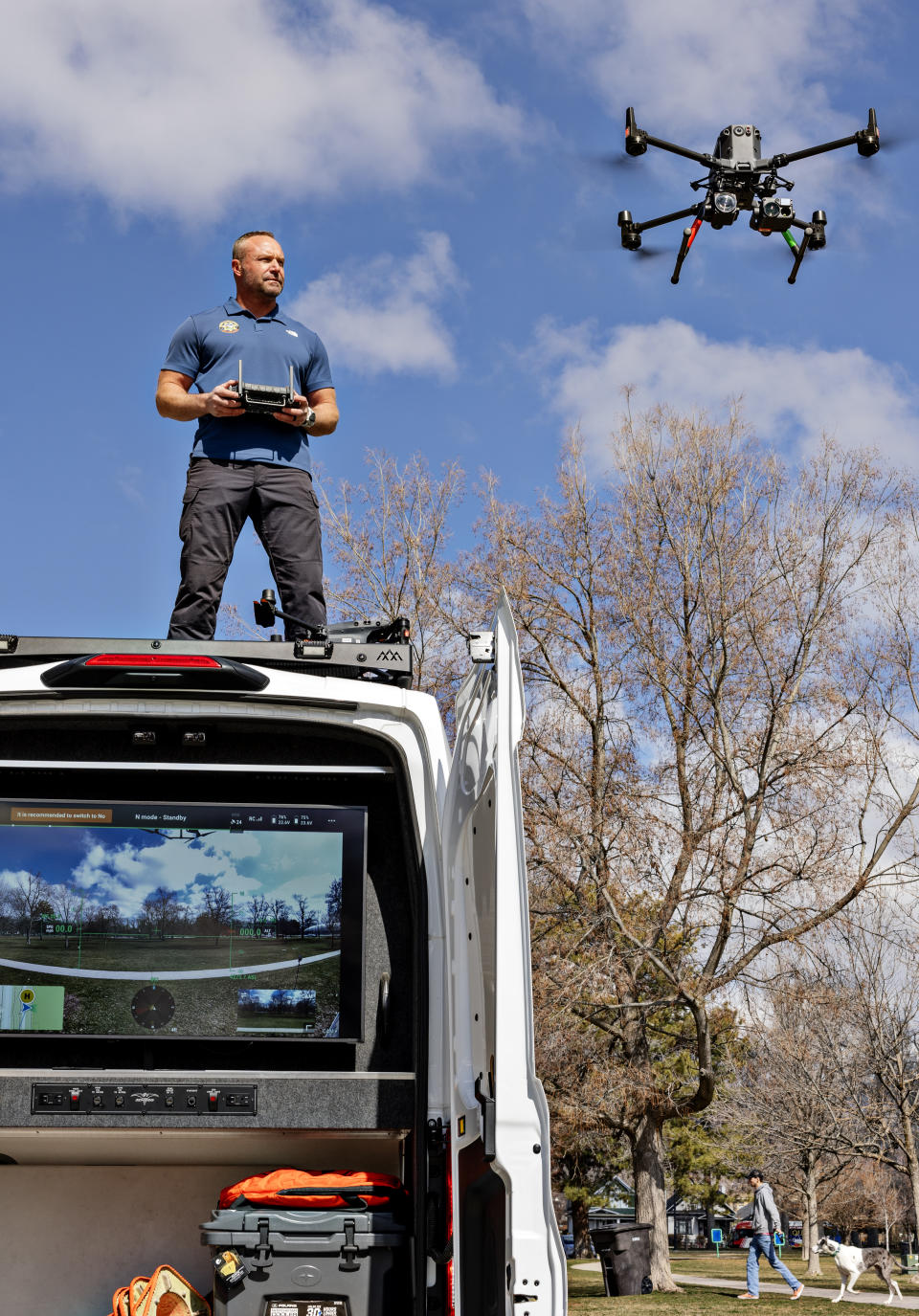A drone factory in Utah is at the epicenter of anti-China fervor
SALT LAKE CITY - When George Matus was in high school in Salt Lake City, he had a vision of small drones flitting at people’s shoulders to help them explore. At 17, he founded Teal Drones, named after a speedy breed of duck.
“At the beginning, it was more focused on the joy of flight,” Matus said.
But after launching Teal Drones in 2015, Matus was soon struggling to keep it afloat. A drone-maker in China called DJI had dominated the global market with sleek, easy-to-use consumer drones at prices that were simply impossible for a U.S.-based company to match.
At some point, Matus realized that if he wanted to keep his dream alive, he’d have to change the dream.
Today, Matus says Teal sells most of its drones to the Pentagon to help soldiers with reconnaissance, with other sales to municipal police departments and U.S. Customs and Border Protection (“They’ve got our drones deployed on both borders,” he says). The company adopted the slogan “Dominate the Night” to tout its drones’ ability to spot targets in the dark.
“Most of our focus is DOD (Department of Defense),” said Matus, now 26. “Since the invasion of Ukraine, it has become very clear that drones are incredibly impactful to war.”
The U.S. small drone industry is experiencing a renaissance after having been all but given up for lost, due to the impossibility of competing with China on production costs. The reason for the resurgence is a grim one: Small drones have proven a potent battle tool in the Ukraine war, with soldiers strapping bombs on them and sending them on one-way missions.
The Pentagon has announced a “Replicator” program to produce thousands of U.S. small drones, in an initiative that U.S. drone makers hope will help provide them with steady sales and help offset their higher production costs. Jeff Thompson, whose company Red Cat Holdings acquired Teal Drones in 2021, said other governments across North America and Europe are also ordering thousands of drones, wary of being caught flat-footed if another war breaks out.
“Everyone wants to make sure they have the drones before something happens,” Thompson said. “Hopefully everyone buys a whole bunch of drones, and no one wants to invade each other anymore. That’d be great.”
Pivoting to defense
When Matus was launching Teal in 2015, investors anticipated a commercial boom: Amazon’s founder Jeff Bezos had announced ambitions to deliver packages by drone nationwide as early as 2017. (Bezos owns The Washington Post.)
But the drone-based consumer lifestyle never materialized. Sorting out the licenses to fly the devices was complicated and varied by state. The technology was still not reliable enough. There was also a reflexive ick-factor from the public over the idea of eagle-eyed drones flying over their homes all the time.
“The concept is cool and exciting,” said Adam Bry, CEO of the San Mateo, Calif.-based drone maker Skydio, of the idea of delivery drones. “The actual delivery of working product has turned out to be phenomenally complicated.”
Then in 2016, China’s DJI launched a 1.6-pound drone called the “Mavic Pro” for $999, which pretty much demolished the hopes of U.S. players. The Mavic Pro could capture 4K video and 12-megapixel still photos. It could lock onto a subject and follow them automatically and live-stream video from more than four miles away. With its four wings folded, the 3.3-inch by 7.8-inch device could be carried in a pocket.
Matus tried to match the Mavic Pro’s thousand-dollar price point, but he would have to lose money on every drone he sold. He was forced to winnow his staff of 45 down to 10.
“That was the trough of disillusionment,” Matus recalled. “Most companies were going out of business. And Teal was also very close to the brink.”
Alex Wishart, 58, Teal’s technician manager, recalled it being “touch and go for a while,” though he said the company never missed paychecks, even during tough times.
Teal, Skydio and the few other remaining U.S. drone makers were thrown a lifeline in 2018, when the Defense Department banned the use of DJI drones in the U.S. military, citing security concerns of using a China-based supplier. The Army began looking for domestic vendors.
“We went all in on defense,” Matus said. “We knew that would be our future.”
Teal revamped its drones to be weatherproof, with a thermal camera for night vision, and with a higher level of cybersecurity. The company named its next drone the “Golden Eagle” and unfurled an enormous American flag across its factory wall.
Skydio also made the shift, closing down its consumer drone division in 2023 to focus on government customers.
Matus’s team is now up to nearly 100 people, the most ever. That’s still a far cry from DJI’s 14,000 employees, who operate automated assembly lines in China, with rows of robot arms churning out some 70 percent of the world’s drones.
Teal’s workers in Salt Lake City assemble their drones by hand, sitting at several long tables in an open workshop. There is no need for conveyor belts or automated production at their current scale. They do have one robot arm in the back, which is used to calibrate each drone’s navigation systems. After calibration, they take the drones out to a grassy patch out front to run them through test flights, with the snow-capped Wasatch Mountains in the distance.
Teal’s revival has brought several dozen new engineering and manufacturing jobs to Utah. Even workers with no technical background have quickly picked up the ins and outs of building and flying drones.
Zach Childs, 23, who grew up in West Jordan, south of Salt Lake City, said he did not know anything about drones before joining Teal in January 2023.
“Now I’m like a complete hobbyist,” said Childs. “I have drones at home that I always use … it’s practically a supercomputer that’s flying around in the air. I mean, it’s got nine different processors.”
Alexander Pot, 19, who was building drone controllers on a recent weekday afternoon, said his girlfriend’s grandmother had come to work at Teal first and had introduced him to the job.
“I build up these big controllers from the bottom,” he said. “I’m really trying to learn as much as I can.”
Matus still faces an uphill battle. Even in the Salt Lake City area - Teal Drones’ own backyard - police are skeptical there’s a need to buy domestic. They say China’s DJI remains the gold standard in functionality and price, and they believe the cybersecurity risk is minimal when the devices are run disconnected from the internet.
Kyle Nordfors, drone search-and-rescue coordinator for Weber County, just north of Salt Lake City, said that while he hoped to see U.S. drone brands become more competitive, DJI’s are still the best. He said DJI’s better functionality makes the difference between life or death when his team is searching for hikers lost on snowy slopes.
“Unfortunately, the U.S. manufacturers are still years behind,” Nordfors said. “If these anti-Chinese laws go into effect, it will cost American lives. And this isn’t hyperbole. I can give you actual names of American citizens that would have perished if I was forced to use an American drone.”
Nordfors said he believes there isn’t a risk of data leakage to China from the drones when they are set to operate disconnected from the internet, which he says is how his team uses them. The pride of his fleet is a top-of-the-line $30,000 DJI drone that can zoom in on targets far out on the horizon and that has a thermal mode that makes people pop out of the landscape.
Nordfors said he was glad Utah’s lawmakers “listened to logic” and haven’t banned DJI drones. He said he’d explained to them how they could delete all the data off the drones before reconnecting them to the internet. “It’s all fearmongering and nonsense,” he said.
Josh Ashdown, a sergeant with the Salt Lake City Police Department overseeing its drone program, says his team has a fleet of 17 drones from four brands - China-based DJI and Autel, and the U.S. brands Skydio and Brinc.
“Some of it is just economics, on which ones are the most affordable, and being responsible with our tax dollars,” he said.
Ashdown said the Salt Lake City Police Department now has 27 officers licensed to fly drones, and they take them out for an operation or for practice almost every day. He called the drones a transformative technology that is allowing police officers to monitor parade routes for possible attackers, and to check a location for bystanders before a SWAT team moves in.
The state of Florida adopted a ban on police using China-made drones last year. There are no such restrictions in other states.
At the Miami Police Department, Sgt. Anthony Loperfido says his team had a fleet of 14 DJI drones before the state banned China-based drone brands, and they had to scramble to find the funds to buy more-expensive domestic ones. His team now fields 12 Skydio drones made in California, which cost around $25,000 a piece, compared to $1,500 to $3,000 for the DJI ones. “That’s a lot of money to put out,” he said.
Loperfido said his team has had to suspend their use of drones for indoor SWAT operations after Florida’s China drone ban went into effect. The U.S.-made drones, he said, were “falling short” in indoor cellular connectivity. If the operator loses contact with the drone, he said, it can no longer fly. “Now all you have is a piece of technology sitting inside some place on the floor that you can’t communicate with,” he said.
But Loperfido said U.S. drone makers have been making strides. He cited the new Skydio X10, which he said has features tailored for law enforcement.
“I would have said that then,” he said, of U.S. drones lagging in functionality. “I don’t think I can say that now.”
After the work day, Matus’s employees often take out their personal drones, zooming them around in loops around the office for the sheer joy of it. When they pull on paired goggles that display the live feed from their drone’s camera, they can experience the exhilarating drone’s eye view of the high-speed flight.
It’s what a teenage Matus had envisioned his drones would allow customers to do. But his employees are not playing with Teal drones. At $15,000 a piece, Teal’s products are far too pricey to goof around with. The employees instead race cheap and cheerful China-made drones, which frequently crash into the walls, requiring repairs.
The prospects remain difficult for any consumer-oriented U.S. drone company to survive in the face of competition from DJI. Teal’s parent company, Red Cat, had also owned two consumer drone start-ups, Fat Shark and Rotor Riot, which sourced from China to keep their costs down. Red Cat recently sold those two start-ups, keeping only Teal.
“With us working with the government daily now, we’ve got to split ourselves,” Thompson said. “We can’t say ‘Made in USA’ and I’m on the phone at 2 o’clock in the morning ordering a bunch of stuff from China.”
The last American consumer drone model, Matus says, had been Snap’s Pixy, which the company issued a recall on in February due to overheating batteries that sometimes caught fire.
Related Content
The horse wars of Stormy Daniels
Alone in a bathroom: The fear and uncertainty of a post-Roe medication abortion
How Donald Trump’s mug shot became a defiant and divisive 2024 symbol
